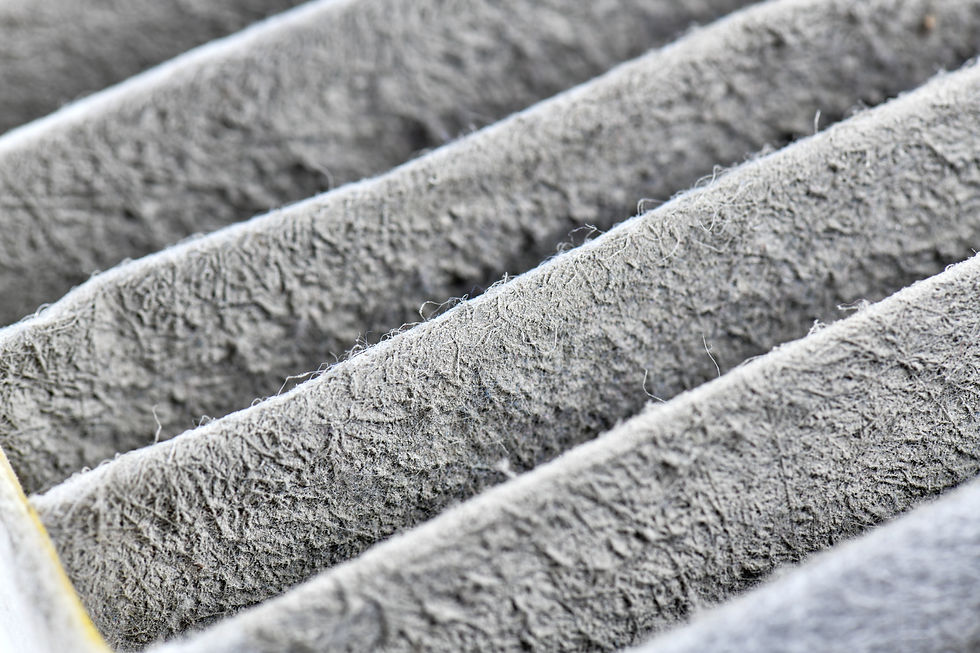Understanding Indoor Air Quality: What’s in the Air We Breathe?
- Jennifer Crowley
- Jul 31, 2023
- 3 min read
Updated: Jul 9, 2024

The air we breathe plays a vital role in our health and well-being. Yet, while outdoor air pollution has received much attention recently, indoor air quality is just as important and often neglected. This blog post will take a closer look at what’s in the air we breathe, focusing on indoor air.
Common Indoor Air Contaminants
Volatile Organic Compounds (VOCs)
These are chemicals released into the air from products such as paints, cleaning supplies, and personal care products. They can be invisible and have a distinct odour, but only sometimes. However, they can cause eye, nose, and throat irritation, headaches, and in severe cases, long-term health problems.
Particulate Matter (PM)
These tiny particles float in the air and can be inhaled into our lungs. They can come from sources such as tobacco smoke, cooking, and dust. Particulate Matter can be seen as fine dust or smoke but can also be invisible. Inhaling PM can cause respiratory problems and worsen conditions such as asthma and heart disease.
Biological Contaminants
This includes mould, mildew, bacteria, and viruses. These can be visible or invisible and cause allergic reactions and respiratory problems. They can grow in damp or humid areas and are often a result of poor ventilation or water damage.
Carbon Monoxide (CO)
This is a toxic gas produced by burning fuel. It is colourless, odourless, and tasteless, making it difficult to detect. It can cause headaches, dizziness, and in severe cases, death. Carbon monoxide is often a result of improperly ventilated appliances such as stoves, heaters, and fireplaces.
Radon
This naturally occurring radioactive gas is released from the ground and can enter buildings through cracks in the foundation. It’s the second leading cause of lung cancer in the U.S. and is also odourless and tasteless, making it difficult to detect.
Formaldehyde
This toxic chemical is commonly found in building materials and furniture. It can cause eye, nose, and throat irritation, and in severe cases, it can cause cancer. Formaldehyde can be released into the air from products such as particleboard, flooring, and textiles.
Adverse Health Effects of Poor Indoor Air Quality
Breathing in poor-quality indoor air can have a range of negative health effects. Some of these include:
Eye, nose, and throat irritation
Headaches
Allergic reactions
Respiratory problems, including asthma and bronchitis
Dizziness
Long-term health problems, including cardiovascular disease and cancer
Increased risk of lung cancer, especially from radon exposure
According to the Environmental Protection Agency (EPA), indoor air can be up to five times more polluted than outdoor air, and the average person spends 90% of their time indoors. Poor indoor air quality has been linked to various health problems, including respiratory issues, allergies, and cancer. The World Health Organization (WHO) estimates that each year, 3.2 million people die prematurely from illnesses attributable to household air pollution caused by the incomplete combustion of solid fuels and kerosene used for cooking.
Indoor air quality is just as important as outdoor air quality, and understanding what’s in the air we breathe is crucial to our health and well-being. By reducing exposure to common indoor air contaminants such as VOCs, PM, biological pollutants, CO, radon, and formaldehyde, we can significantly improve the air we breathe and protect our health.
Some simple steps to improve indoor air quality include:
Ventilating your home regularly to bring in fresh air
Using natural, non-toxic cleaning products and personal care items
Keeping your home well-maintained and free of moisture and mould
Using air filters to remove particulate matter and other contaminants
Testing your home for radon and taking steps to reduce exposure if necessary
In conclusion, improving indoor air quality and protecting our health is crucial. By understanding what’s in the air we breathe, we can make informed decisions to improve the air we breathe, reduce exposure to harmful contaminants, and promote good health.





















